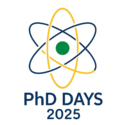Speaker
Description
Otoacoustic Emissions (OAEs) offer fast, objective, frequency-specific hearing assessment but remain largely limited to newborn screening. Recent advances in acquisition, analysis, and nonlinear modelling have enhanced their diagnostic potential beyond research settings.
Using advanced swept-tone paradigms with and without contralateral stimulation, specifically designed time-frequency filtering algorithms will be applied to DPOAE signals from various population groups, such as neurological patients, who also underwent neurological tests. We will also assess the effects of posture, age (children to adults), ophthalmological conditions, and microgravity (astronauts) on the DPOAE signals. DPOAE components from different cochlear mechanisms will be separated using theoretical modelling predictions to enhance SNR and improve sensitivity and specificity by reducing spectral “fine-structure” interference, strengthening correlations with clinical variables.

